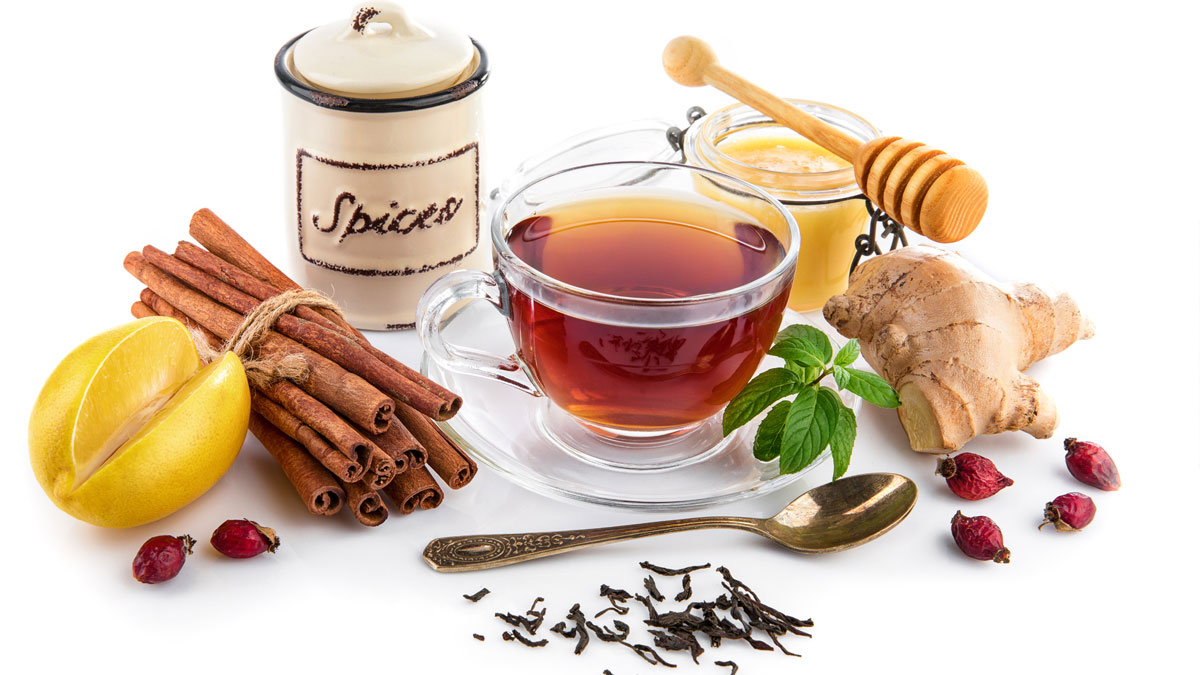‘Tis the season for delightful holiday foods; to the palate, the holidays are synonymous with herbs and spices that bring the Yuletide season to life. And there’s good news for your health: In addition to the flavor boost, herbs and spices can do much more for your body than simply get you in the mood for a holiday feast.
“Most spices are excellent sources of antioxidants. However, certain herbs and spices are shown to have the power to make us happy,” explained Jalak Patel, MS, RD, LD, outpatient dietitian for Bon Secours St. Francis in Greenville. “Some spices serve as natural antidepressant properties, giving the mind and body a boost with a variety of different flavors.”
So when you’re in the kitchen this winter, try to include some of these traditional holiday herbs and spices to improve your physical and mental health.
Cinnamon
“Cinnamon may help control blood sugar, and there is evidence that it helps improve cholesterol levels,” said Debbie Petitpain, MS, RDN, media spokesperson for the Academy of Nutrition and Dietetics, based in Charleston. “Its aroma can boost appetite in those struggling to eat enough.”
Just one-half teaspoon of ground cinnamon has as many antioxidants as one-fourth of a cup of fresh blueberries.
Patel suggested sprinkling one-half teaspoon on oatmeal or yogurt or atop baked sweet potatoes or unsweetened applesauce.
Rosemary
This savory herb helps brighten the winter blues. It’s been shown to improve physical or mental fatigue, burnout and depression and also calms nerves and helps insomnia.
Thyme
“Like rosemary, thyme is a therapeutic agent in cases of mental fatigue, stress and insomnia. It also stimulates the mind and calms the nerves,” Patel said.
To combine the positive effects of rosemary and thyme, she suggested using a poultry blend, found in the fresh herb section of most produce departments, and using it in holiday favorites like stuffing, turkey, roasted vegetables and tomato-based stews.
Ginger
Another holiday favorite, ginger is known for its ability to relieve digestion and alleviate nausea.
“This is behind the classic use of providing ginger ale to those with an upset stomach or the use of ginger candies by women with pregnancy-related morning sickness,” explained Petitpain.
The gingerols in ginger, she continued, are beneficial to the joints.
“Gingerols are anti-inflammatory agents. Early studies suggest injections of ginger extract into the knee relieves osteoarthritis pain.”
Peppermint
“Peppermint is often used as a supplement by people with irritable bowel syndrome, as several studies have shown enterically coated supplements may help relieve symptoms,” continued Petitpain. “It may also be helpful in the relief of tension headaches when applied topically.”
One quick way to add fresh peppermint to your diet, added Patel, is to muddle peppermint into your tea or water or to add finely chopped mint to salads.
Sage
“Sage is a commonly used holiday herb used in poultry and stuffing. Therapeutically, sage has been traditionally used to aid in digestive problems, including loss of appetite, gas, stomach pain, diarrhea, bloating and heartburn,” said Patel. “It is also used to improve mental performance and memory, to reduce pain after surgery, for Alzheimer’s disease and to prevent lung cancer.”
Additionally, Petitpain suggested sipping on sage tea to alleviate a sore throat.
No matter what herbs and spices you’re cooking with this season, all of them contain antioxidants that help reduce inflammation associated with chronic diseases.
“Many studies have shown the beneficial effect of aromatherapy, in general, on mood,” said Petitpain. “Regardless of whether the aromas of these spices have clinical data to show they lift mood, most people smell these spices, recall warm memories and feel uplifted.”
Pumpkin Pie Breakfast Smoothie
Provided by Debbie Petitpain, MS, RDN, media spokesperson for the Charleston-based Academy of Nutrition and Dietetics.
Blend 1 frozen banana; 1 cup canned pumpkin; 1 tbsp pumpkin pie spice; ½ cup vanilla Greek yogurt; and 1 cup soy or fat-free milk to make breakfast for two.
By Anne Shuler Toole
